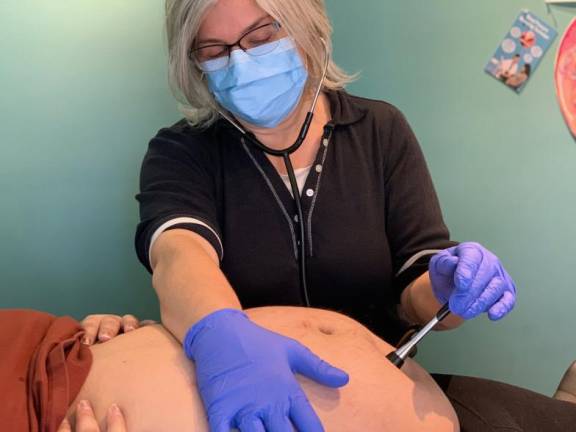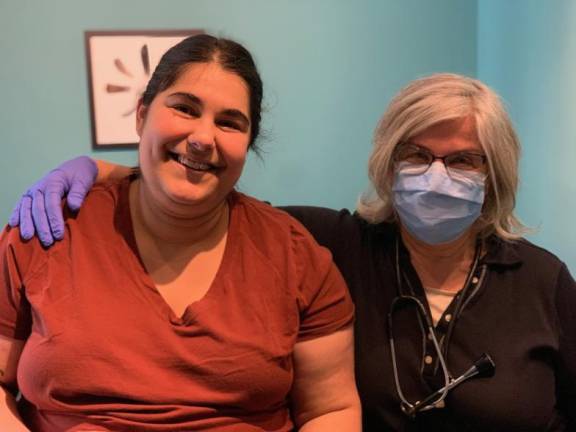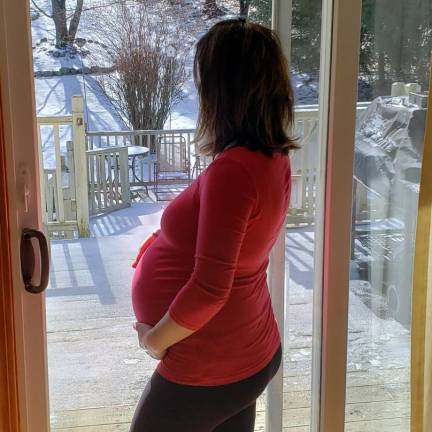Midwives on the Front Lines
As homebirth requests spike, practitioners tell some moms they’d be better off at the hospital



Like first responders across the board, midwives are in severe short supply. In addition to appealing to all health care workers to volunteer their services, Governor Cuomo is temporarily allowing any midwife licensed in North America to practice in New York regardless of whether they have a state license. Some New Jersey midwives – previously limited to junior midwife status in New York – are rolling up their sleeves. Some happily retired midwives are coming out of retirement for 2020. Others are saying, Hang on a sec.
“You know, I was in midwifery to answer the call,” said Jessica Lawlor, one of the two first homebirth midwives licensed in New Jersey. “All of a sudden there’s this big call for people that need to make a different choice.” Please come out of retirement, friends begged. Could you consider just doing this?
She spent 24 hours considering. (In another ironic twist, she would finally be allowed to midwife in New York, something she’d long fought for). “I would have considered it if I wasn’t doing a significant amount of overnight shifts,” she said. “The clear answer was no, there’s plenty of other work.”
Interest in homebirth has been tracing a curve in parallel with the coronavirus. In mid-March, midwives started getting cold calls to their closely guarded personal numbers. Then when the ban on partners in delivery rooms was announced on March 18, that was when midwives’ phones – retired or not, in-state or not – starting ringing off the hook.
For those three days when expectant moms were facing the prospect of birthing alone, “it was just mayhem,” said Susanrachel “Birdie” Condon, of River and Mountain Midwives and the Hudson Valley Regional Representative on the board of the NYS Association of Licensed Midwives. “Because your doula can’t come, your spouse can’t come, nobody can come, and you’re going to be alone – and you might be separated from your baby,” she said.
On March 21, Governor Cuomo issued an executive order to allow one support person, who doesn’t have a fever, to stay with the laboring mom in the hospital.
Sobering Conversations
Midwives across the region have been meeting and talking (virtually of course), developing screening protocol and hammering out the logistics of subbing for one another. They’re also having sobering conversations about what it will look like to "take on this many people this late in the game,” Lawlor said. “It’s probably not gonna look good.”
Yes, it’s gratifying to finally get the respect they’ve been struggling for all these years, even if it’s to be called upon to risk their lives en mass. “The nature of our jobs is that we cannot socially distance. The reality is that some of us will become ill during this time,” wrote midwife Robina Khalid, in an open letter to the birth community on behalf of the New York Home Birth Collective on March 18.
“While homebirth midwives support every birthing person’s ultimate autonomy in choosing the birth space and attendant that feels safest to them, we also have reservations about the practice of ‘birthing in place,’” Khalid wrote.
“Birthing in place” is a nickname coined by midwives to describe this brand new phenomenon. “Because ‘home birth’ is a whole thing, it’s a whole paradigm, it’s a whole relationship,” said Condon. “And if you’re someone who’s had care from an OB-GYN for 38 weeks and then you’ve decided to not go to the hospital, it’s not the same.”
If you were to transfer into the hospital during labor (which about 10 percent of first-time mothers do), your midwife would have to do something that goes against everything their model of care is about: She would have to drop you at the hospital door. Only one person is allowed to go in with you. Now you and your partner are in the hospital alone and in crisis, which is of course worse than having gone to the hospital, calmly and voluntarily, in the first place.
“While I would never tell midwives you shouldn’t take any of these people, just be really, really, really specific about who you say yes to,” Lawlor advises. “Because you just might not really be helping, in the long run.”
Coronavirus Hot Spots
Last Friday morning, Cara Mulhahn, who has run her one-woman midwife operation in New York City since 1996, caught her second baby of the week. One was a first baby, whose mother had scheduled her home birth from the beginning. The other was a third baby, whose mother had been referred to Mulhahn by her doula a week and a half earlier
In years past, Mulhahn used to take on up to 10 births a month; these days she aims for between four and six, though she’s thinking about stretching to seven. While some midwives have drawn a bright line around coronavirus hot spots, she is continuing to serve her ultra-Orthodox clients in Crown Heights and Williamsburg.
On her last home visit to a mom due this month, “her kids were all in another room coughing. So that’s someone where I’ll be thinking about it more,” said Mulhahn, who wears an N95 mask and gloves and two layers of clothes, one of which she strips off post-visit and puts in a plastic bag, changing somewhere discreet, like maybe an apartment hallway.
“Other people get the flu, they get everything, and I never get anything, so I’m not really living in fear of COVID,” she said. She once caught a baby whose mom was HIV-positive, and “frankly that was more nerve-wracking than delivering COVID,” she said. “The truth is I really like a challenge. I would say that an archetypal part of my psychological identity is to be a service person. So I feel like I’m at my best when I can be available for people.”
When we caught up with Mulhahn, she was caffeinating after a nap. That morning’s birth was “completely smooth and uncomplicated,” she said, but the hiccups that occurred, while minor, illustrate the problems that arise when a midwife and her client are essentially strangers. The woman’s water broke two weeks before her due date, and contractions didn’t follow immediately. Normally, Mulhahn would have waited until she started having regular, strong contractions to go over to her apartment. But because they'd never met, Mulhahn went over that morning, listened to the baby, took vitals, and went home. That afternoon, the woman called, concerned: she couldn’t feel the baby move.
So Mulhahn went back over at 4 p.m., putting on her two layers, mask and gloves, and had the mom eat something and listened to the baby’s heart rate: all good. The baby came the next morning – which meant that Mulhahn was handling this labor on and off for 24 hours, as opposed to a few hours that it would likely have taken if they’d had a rapport.
“If that had been my patient for the first nine months of pregnancy, I know she wouldn’t have had that concern. She got, you know, overly concerned, because I think she hadn’t planned on this choice,” Mulhahn said. “When someone’s going to switch last moment, it’s often their psyche hasn’t completely wrapped around this. They’re feeling relieved, but then once it gets started they’re like, hey wait a minute, this wasn’t my plan.”
For midwives everywhere, difficult decisions await. “I had a baby at home and I had a home birth midwife, so I think it’s a very intelligent solution to the pandemic that’s happening now,” said Mulhahn. “The problem is having to transfer. What that does to my patient relationship, it’s the most vulnerable moment. It really feels like a breach of integrity to take a first-time mom and to know the transfer rate is 10 percent. I don’t want to bring her the door and dump her there. That’s the reason we’re not excited about accepting first-time moms. It’s very sad, because they’re the ones who are most likely to have unnecessary interventions.”
The requests are backlogging on Mulhahn’s website, “and I haven’t even necessarily done verbal consults with everybody.” There’s one first-time mom in particular that Mulhahn doesn’t know if she should take.
“I’m still thinking about if I would be comfortable taking her,” she said. “It’s her first baby. And I’m like ah. I don’t know what to do, because I’m conflicted.”